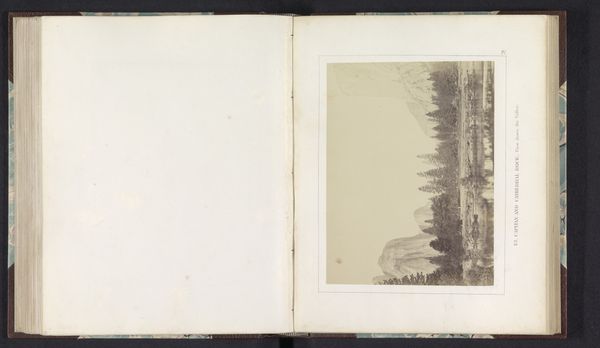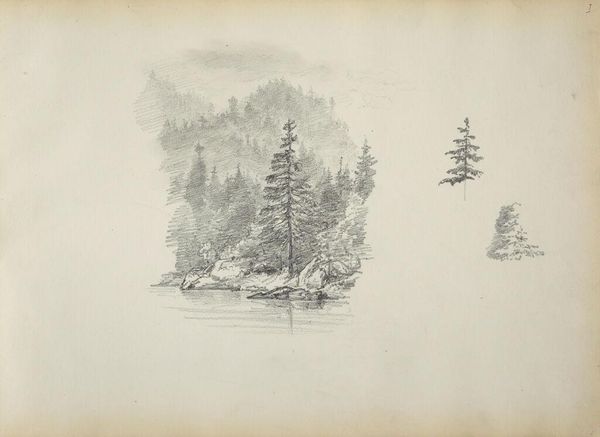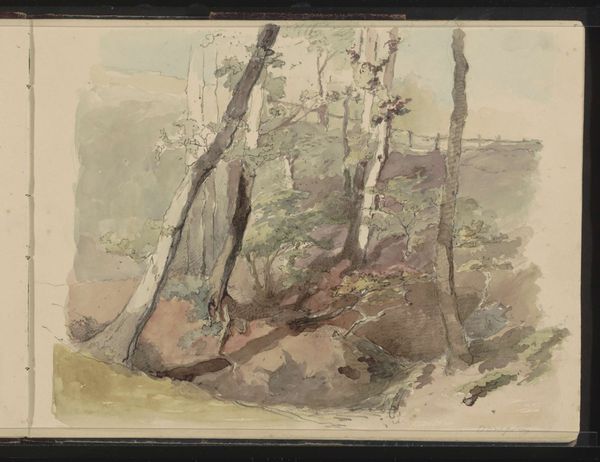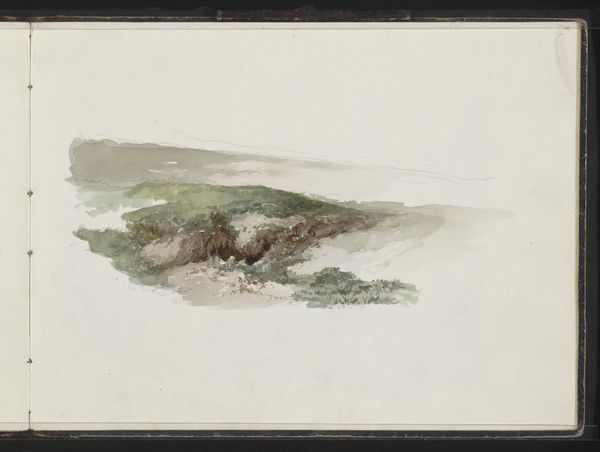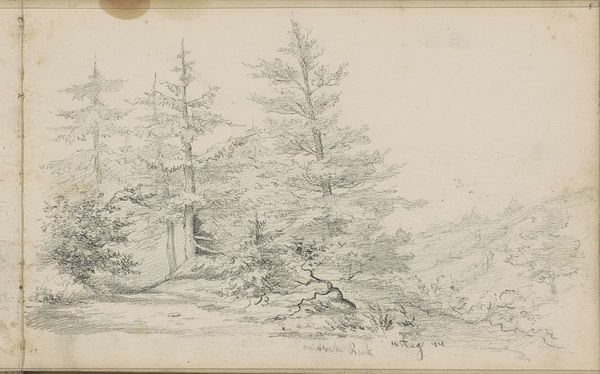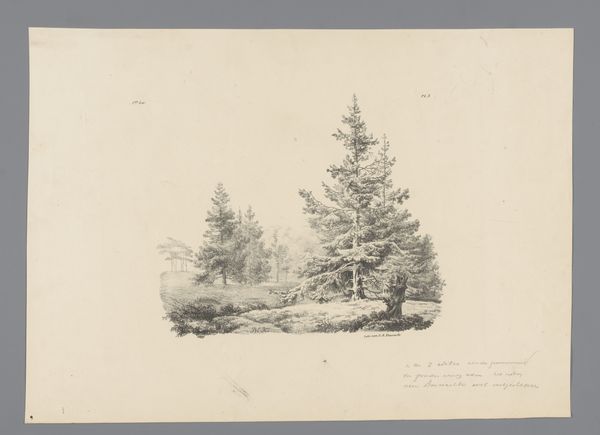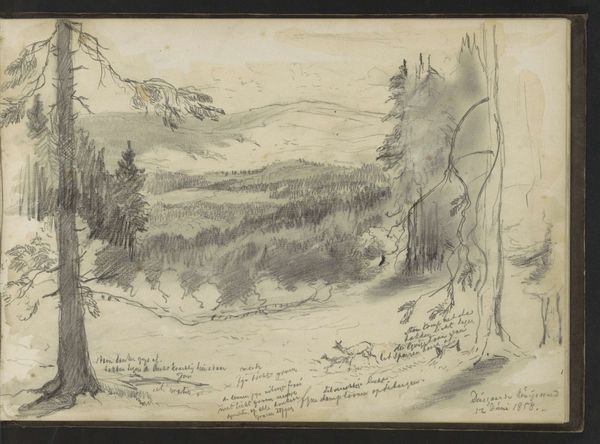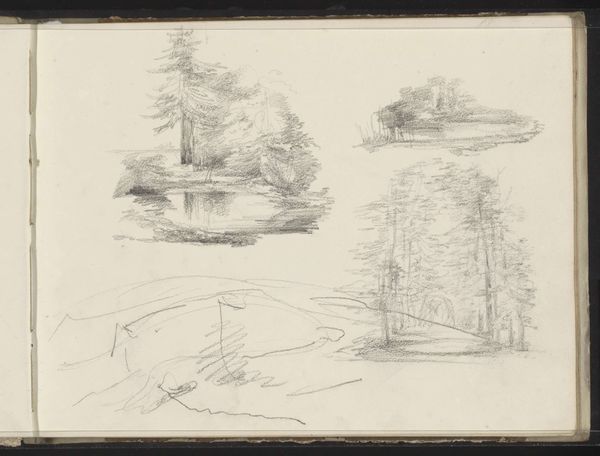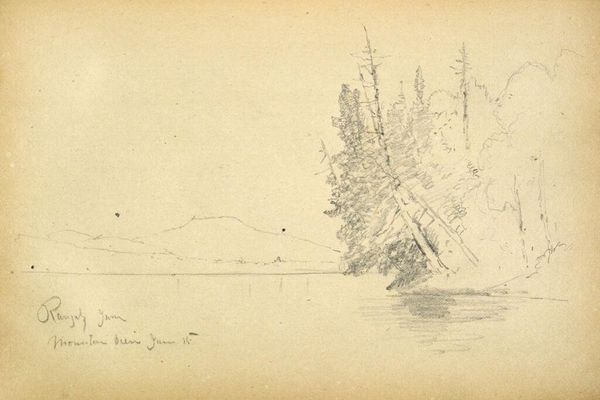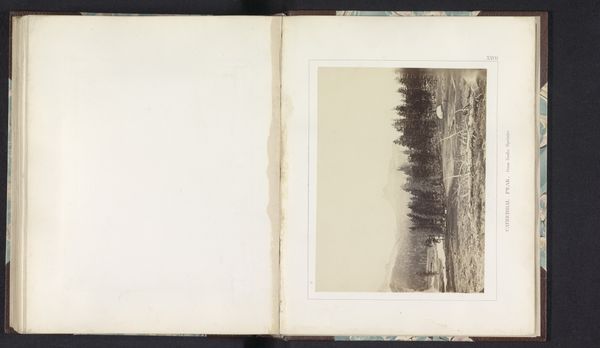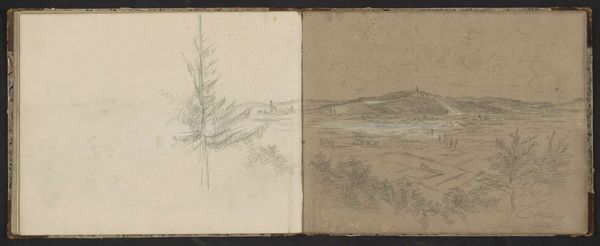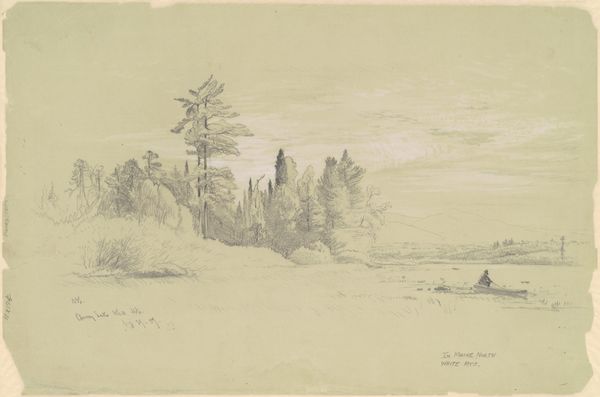
mixed-media, plein-air, paper, watercolor
#
mixed-media
#
lake
#
plein-air
#
landscape
#
paper
#
watercolor
#
coloured pencil
#
romanticism
#
mountain
#
mixed media
#
watercolor
Copyright: Rijks Museum: Open Domain
Editor: So, this is "Berglandschap met een meer en bomen," a landscape scene made with mixed media on paper, probably around the first half of the 19th century by Abraham Teerlink. It feels incredibly delicate, almost like a quick observation. What captures your attention? Curator: The "plein-air" nature is crucial. To understand this, we must think about the availability and quality of materials for outdoor work at that time. Paper production, pigment creation for watercolors and colored pencils... were these mass produced or crafted by hand? Who had access to these, and what does it say about the artist's class and social position? Editor: That's interesting. I was focused on the scenery itself, the trees and the implied scale of the mountains in the distance. Curator: But consider the very *making* of that scene! Think about the materiality itself. The labor involved in grinding pigments, preparing the paper, and the sheer logistics of transporting these fragile materials to the location. Was Teerlink directly responding to the scene, or recreating a sketch from memory later in the studio? This also dictates the art’s "authenticity." How did such "plein-air" practices then impact the commodification and consumption of landscape art in that era? Editor: So you're suggesting we shouldn’t just see trees and mountains, but a whole network of production behind this “quick observation”? Curator: Exactly. Every visible trace, every mark, tells a story about materials and their availability, production methods, labor involved, access and social class, thus leading to commodification, consumption and economic analysis of 19th century art. Editor: That's shifted my understanding significantly. It really underscores the layers involved in what I initially saw as a simple sketch. Curator: Precisely. It brings awareness to not just *what* we are looking at, but *how* and *why* it exists the way it does.
Comments
No comments
Be the first to comment and join the conversation on the ultimate creative platform.
